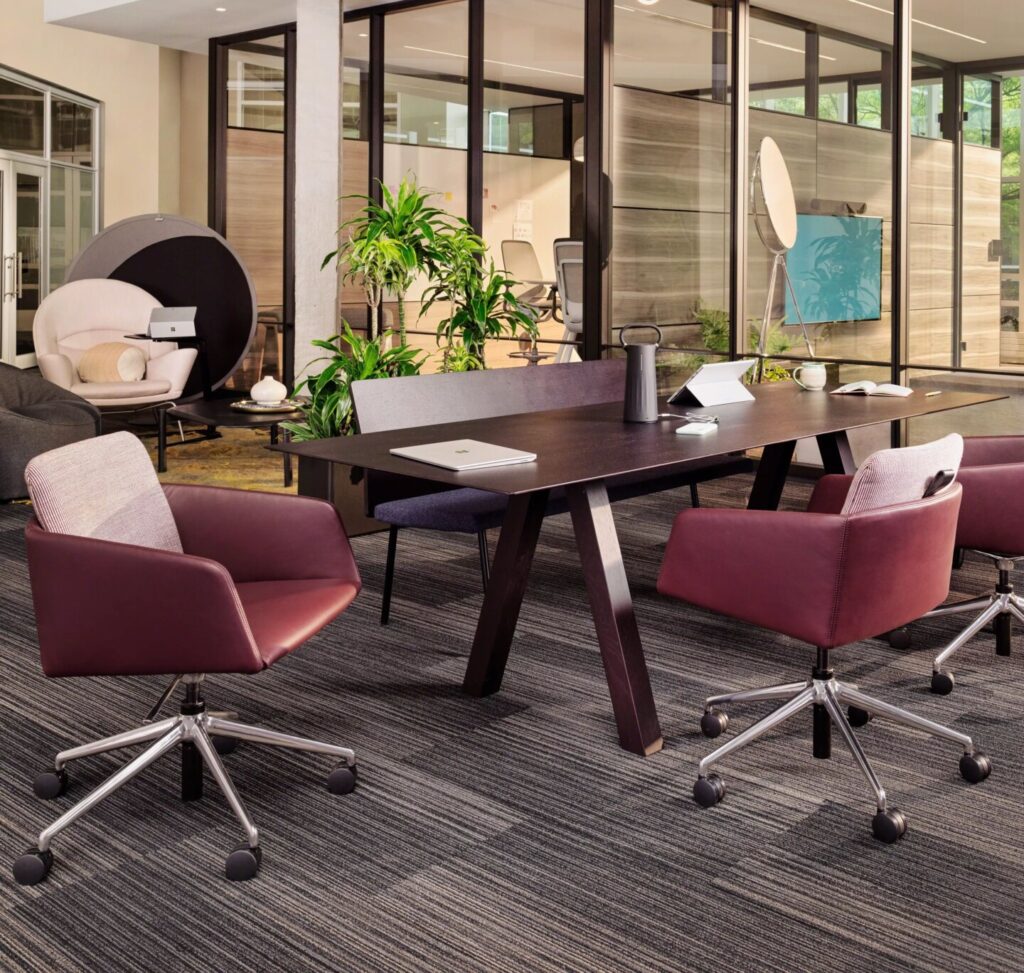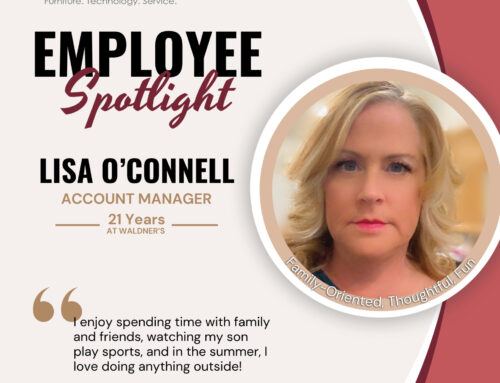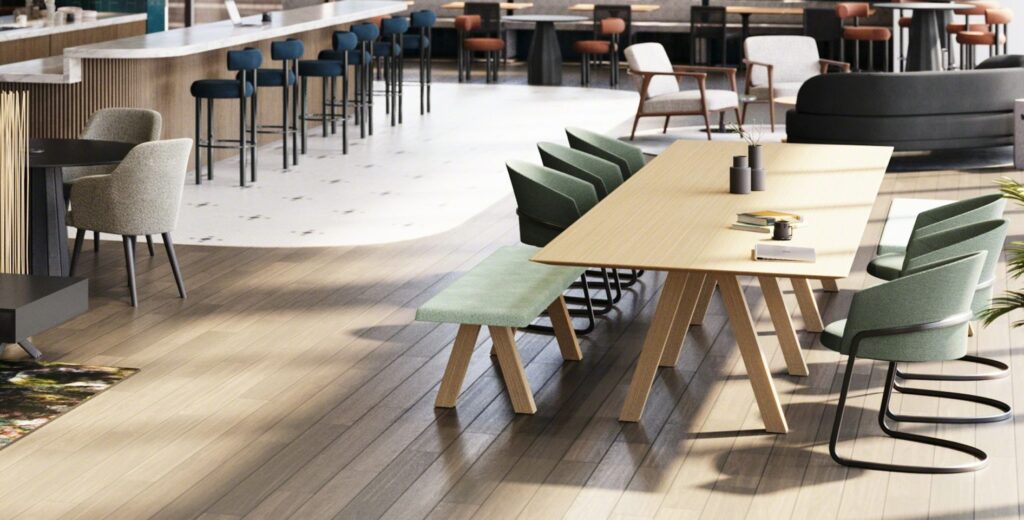
The legal workplace is evolving to adapt to the new importance of community space and different working modes.
Recently, Steelcase researchers have discovered what legal spaces and law professionals need to be most successful and productive. * Legal spaces are quickly transforming to adapt to legal professionals’ desire of upgrading their offices to support new work modes and collaboration styles. There are 3 key factors that are driving these changes to law offices: employee inclusion, flexibility, and regeneration.
The new concept of integrating community spaces into legal spaces has grown rapidly in popularity. It shows clients an authentic view of the company culture, while at the same time, brings people together and supports a positive work environment.
Legal firms are redesigning their offices to include 5 key spaces that support and meet these new expectations of employees: an inclusive, connective, multi-functional, work environment.
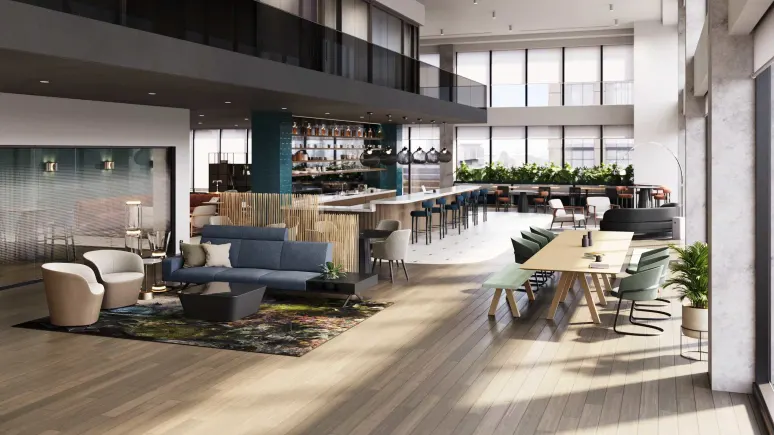
1. Community Center
A large community center acts as a central hub of the office, supporting socialization and collaboration among employees in a comfortable space.
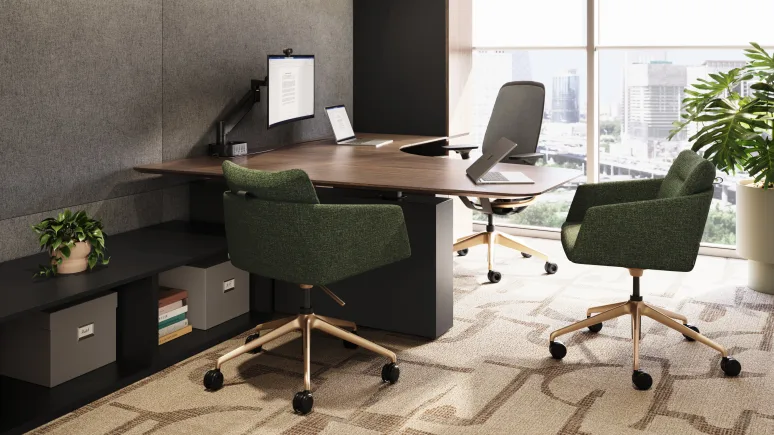
3. Shared private office
A shared private office allows individuals to have their own space to focus, while still having the ability to collaborate with others.
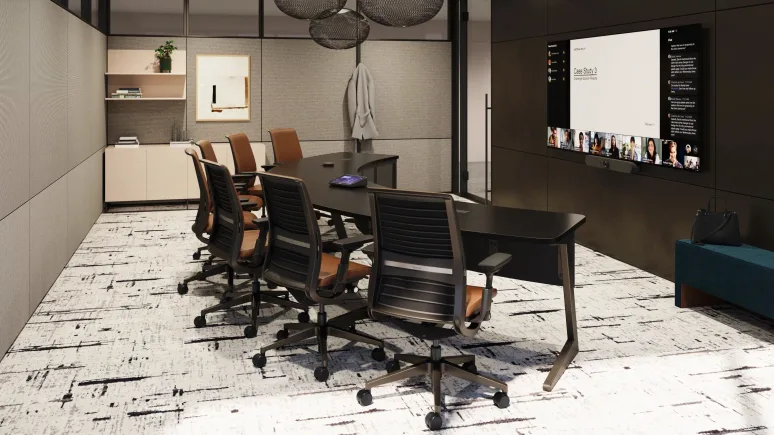
3. Virtual courtroom
A virtual courtroom allows for remote individuals to easily engage and participate in legal proceedings. The curved table and large interactive screen allows for seamless viewing and content sharing.
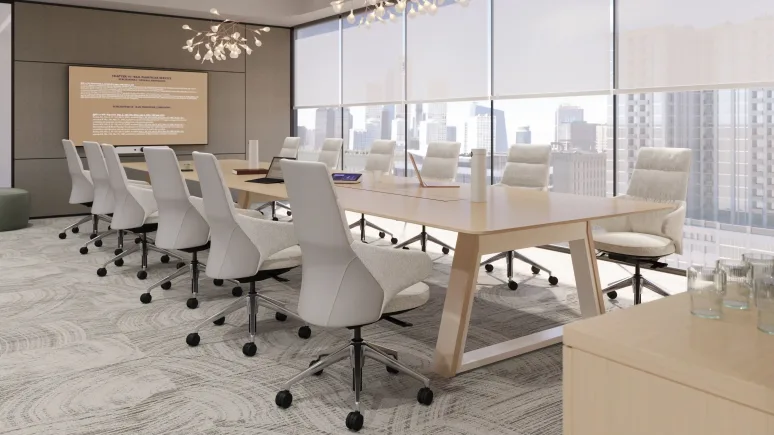
4. Conference center
A conference room is very useful and adaptable as it can support a wide range of groups for a variety of meetings.

5. Owned private office
A private office, which is the most typical workspace in the legal space, is evolving to be able to accomodate collaboration both in-person and remote.
*https://www.steelcase.com/designing-legal-spaces/

